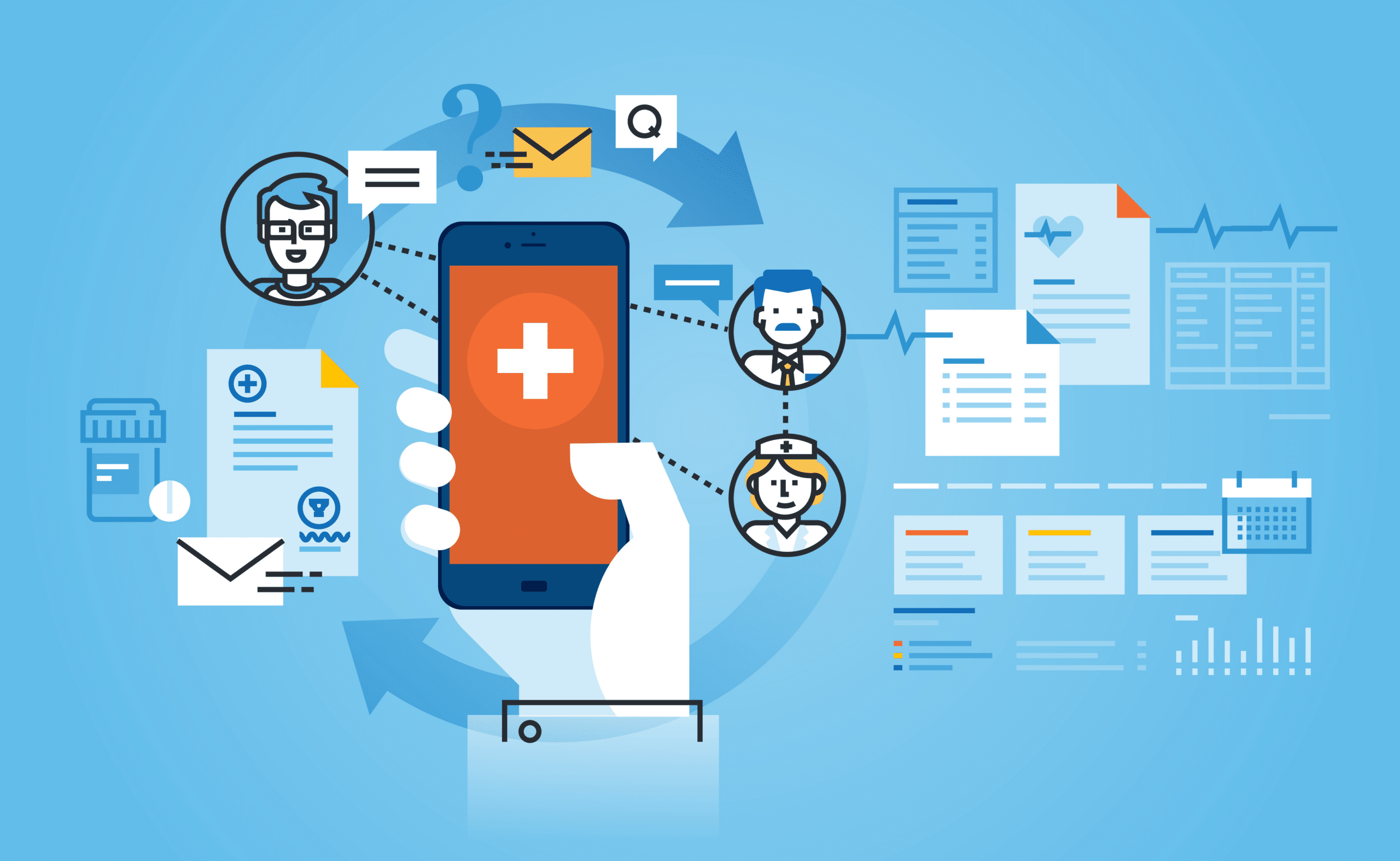As a society, we expect personalized, seamless experiences using our mobile devices and other easily accessible technology. The same focus on personalization, on demand, and self service that allow consumers to hail a car service, order delivery from a restaurant, or automatically restock basic toiletries is required and starting to occur in healthcare, too. Why should our health systems have any different expectations?
As we stated earlier this year, today’s requirements become tomorrow’s expectations. Thanks to COVID, digital transformation has become the standard. Our healthcare clients tell us time and time again that they want to evolve the way they deliver care and services. The digital front door is a strategy that helps meet these expectations in the healthcare industry.
Enter the healthcare digital front door
The digital front door is a strategy designed to engage patients at every major touchpoint of the patient journey. By using technology and platforms consumers are already using to open the door for improved service, speed, and quality.
The driving force behind the need for a digital front door strategy, is the need for digital transformation in general. This need accelerated thanks to the pandemic, where companies needed to pivot their delivering methods of services and goods. From in-person to virtual, from casual to instant.
Even before the pandemic, patients sought new ways — often through virtual, digital, and self-service channels — to not only interact with providers and healthcare organizations, but also evolve the way in which services themselves were accessed to maximize efficiency.
Healthcare consumers are informed, appreciate competition, want ease of access, and services catered to their small group or individual needs. Consumers in the retail world have several options with various levels of concierge services. And now patients are expecting healthcare to catch up.
Providers, payers, and life sciences organizations must invest in the appropriate technology that allows them to meet this expectation. And it’s not just consumers that demand these new digital tools — it’s healthcare employees. Why? Not just because it makes their job easier and more effective, but because they use these devices in their everyday lives, too.
The nature of healthcare will always require levels of human interaction that can’t be replaced. So the right internal tools to facilitate those interactions is key to success. Your organization should be able to adapt and pivot easily to your patient’s needs. But how?
Creating a digital front door in Healthcare
The solution to unlocking your digital front door strategy is mobile.
The digital tools and core devices that patients already use every day provide a path to increasing brand loyalty. How? By helping them with tasks such as:
- identifying a provider
- booking appointments
- viewing test results
- paying bills
- accessing health records
Start by understanding the variety of options that exist in creating self-service, mobile, or digital experiences. Then, align their capabilities to your patient or member needs. This includes robust capabilities around UI/UX, data analysis, process improvement, consolidation of applications, and elimination of disparate entry points.
From there, you’ll know the right tools to support a single point of entry to services and information. And you can reduce the burden by providing it on devices we use all the time.
Next, comes investing in proper system integration so that data is stored all in one place. This makes personalization, support, and services more efficient and effective.
What can digital health and virtual care do for:
Patients and providers?
To maintain a positive patient experience, providers need access to the right patient data at the right time and in the right format to provide the best possible care. Why trek all the way to the doctor’s office for a simple sinus infection? A virtual visit and a symptom checker can accomplish the same results in less than half the time.
Just like patients, providers want an emphasis on self-service, mobility, and agility. They want to deliver on the promise of care anywhere, anytime, and of high value. It all comes down to managing and maintaining data effectively.
With Salesforce, providers can connect different systems and tools all in one place. This creates a digital front door strategy that ensures a holistic and seamless experience.
Payers?
Whether through acquisition or expansion of capabilities, we are seeing providers needs merging with payer activities. And each require the same focus on digital. Payers can invest in more robust, cloud-based applications that deliver on renewed automation, intelligence, and relevance. This helps them to interact with members to address inquiries, needs, and requests.
Life sciences organizations?
Pharmaceutical, biotech, and medical device companies, offer services and value to both providers and patients. Life sciences companies play a balancing act. They are a provider of information and product, while also knowing their role is second to the patient/provider relationship.
Their role may be secondary, but the demand for a technology-driven customer experience doesn’t change. Patients and customers want a personalized experience tailored to where they are in the treatment journey. And they want it delivered in a way that aligns to their communication preferences.
The Silverline difference is key
As a Salesforce Platinum Partner, Silverline leverages best practices acquired through more than a thousand implementations, with real-world experts in the Healthcare industry. We operate across various industry sub-segments, including Provider, Payer, Medical Device, and Life Sciences.
When it comes to your digital front door strategy, we know the platform and we understand your ecosystem. Learn more.




